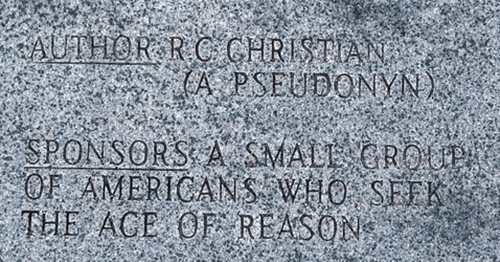Ripley Entertainment Inc.'s Blog, page 285
March 12, 2019
CARTOON 03-12-2019
March 11, 2019
CARTOON 03-11-2019
March 10, 2019
CARTOON 03-10-2019
March 9, 2019
Scientists Find New Killer Whale Species Hiding In The Indian Ocean
Featured in Ripley's Believe It or Not!

[March 3-9th, 2019] Scientists discover a new killer whale species, a stray runs in the Iditarod, and Japan gets a robotic goddess in this week’s weird news from Ripley’s Believe It or Not!
Secret Group Of Killer Whales Found
Perhaps one of the most iconic marine mammals, killer whales are known for their distinct black and white bodies. It seems, however, that a pod of these ocean predators has been lurking in secret in the southern reaches of the Indian Ocean. These killer whales have more petite bodies, sharper dorsal fins, and much smaller patches of white above their eyes. Dubbed the “Type D” killer whale for now, scientists are stunned that such a large animal could have remained unknown for so long.

Credit: Uko Gorter
Stray Runs With The Best
A stray dog in Alaska has entered the Iditarod. The dog joined two sled teams stopped at the Finger Lake checkpoint and kept up with them over 30 miles of snowy tundra. After matching the well-trained dogs for an entire night, the stray was given a warm place to sleep and was flown home on an airplane.

Hidden Prizes In Fine Print?
Companies are notorious for including all sorts of things in the fine print of their terms of service. Wi-Fi agreement in 2017 included a 1,000-hour community service agreement, and several video games have included rights to people’s souls. A high school teacher in Georgia won, however, won $10,000 for reading the fine print on her travel insurance closely. The company included a line offering the prize to the first person to email the company regarding it.

A Robotic Goddess In Japan
A shrine in Kyoto now features an android. The 400-year-old Kodaiji Temple was recently renovated, and now includes the most modern interpretation of the Buddhist Goddess of Mercy, Kannon. Though some might think the robot is inappropriate, proponents explain that rendering the goddess with the most modern technology and detailed craftsmanship possible is a great honor. The android is made from aluminum and silicon and cost nearly one million dollars. The robotic Kannon will greet visitors with prayers and chanting.

Opium-Addicted Parrots Raze Poppy Fields
Parrots grazing on poppy in the Madhya Pradesh state in India have become increasingly vexing for farmers in the region. Each poppy flower can give up to 25 grams of opium, and the birds feed on the plants 30 to 40 times a day. Farmers report birds tearing into seed pods and even snipping off entire stalks of the flowers with their beaks and flying away with them.

Source: Scientists Find New Killer Whale Species Hiding In The Indian Ocean
CARTOON 03-09-2019
March 8, 2019
CARTOON 03-08-2019
March 7, 2019
Did Einstein Really Fail Math?
Featured in Ripley's Believe It or Not!

Most people are at least vaguely familiar with the work of Albert Einstein. We might not have a solid grasp on what exactly E = mc² means or why it’s important, but anybody who successfully makes a math equation famous has to be somebody pretty darn special.
Whenever the words “scientific genius” come up in conversation, Einstein’s name is never far behind. He’s right up there with Isaac Newton, Galileo Galilei and others who have helped shape our understanding of the world. Einstein’s great scientific success, however, has often been portrayed as a real surprise; somebody who showed no academic ability blossoming in a real underdog tale.

We’ve all heard the oft-repeated legend that he “failed grade school math,” only to become one of the most famous physicists in human history, but the real story’s a little more complicated than that.
There’s a lot of debate about the acclaimed scientist’s early life. In terms of speech and his emotional control—he’s said to have thrown violent tantrums—it’s been argued that his development was behind that of his peers. His parents are even said to have thought he had a learning disability.
He also frequently appears on lists of famous people with dyslexia, though no one is sure how accurate this claim is as the understanding and diagnosis of dyslexia was still very much in its infancy.
Einstein biographers Ronald W. Clark and Abraham Pais, refute all of this. There are rumors that Einstein was very slow to speak and write, but this may not have been the case at all. Pais acknowledges that Einstein’s family was apprehensive about his development, but notes that he was able to speak in full sentences by the age of two or three.

According to Clark, some of this confusion can be explained by Einstein’s son Hans Albert, who once stated that his father was “withdrawn from the world even as a boy.” Is that what we’re looking at here, then? The typical image of the misunderstood genius? Perhaps he was perfectly capable of talking, but didn’t often want to. That seems to be the case when it comes to the issue of math, too.
That idea characterizes a lot of Einstein’s schooling. At the age of seven, Einstein received his grades, and his mother wrote, “he was again number one, his report card was brilliant,” and goes on to state that, at the age of thirteen, Einstein was engrossed in the works of various philosophers, reading Darwin and philosophical works intently. “The widespread belief that he was a poor student is unfounded,” Pais concluded.
A gifted student, yes, but a well-behaved, successful, attentive one? Not so much. Later in life, Albert would find difficulty securing a job, for the very same reasons that he sometimes struggled in classes: He considered himself, in his own words, “a pariah” among academics, often being misunderstood for his independence and non-conformity. Which brings us to the real question: where did the famous story that he failed math come from?

The common rumor that he failed a math test way back in fourth grade is simply untrue. The trouble he did have came when he took the entrance exams for the illustrious Federal Polytechnic School in Zurich, Switzerland.
Naturally, being Albert Einstein, he was two years younger than the other applicants and, being Albert Einstein, he performed admirably in the math test. He excelled in math and physics, but it was the non-scientific subjects he performed poorly in. As a result, he was not accepted.

Einstein’s grades at age 17, a six was the highest score.
Continuing his studies at the Canton school in Aargau, Einstein would apply himself and, on returning, earn his place at the prestigious school in Zurich.
When all is said and done, then, it’s clear that Einstein wasn’t the unsuccessful student many have painted him to be. He certainly wasn’t a model student either, but his reputation for ineptitude in math is definitely undeserved. He wanted to be a mathematician for a time!
How did the whole story come about, then? In the same way many other misconceptions come about: a combination of hearsay, exaggeration, and half-truths. Here’s one final interesting fact: In 1896, Einstein’s last year at Aargau, the school’s grading system was reversed. “1” became the lowest grade, and “6” became the highest. Previously, the reverse had been true.
Could somebody have seen that Einstein scored a lot of “1” grades, under the new system, and mistaken these for failures? Was this unfortunate coincidence enough to mar Einstein’s academic name for over a century? Well, to an extent, perhaps so.
By Chris Littlechild, contributor for Ripleys.com
Source: Did Einstein Really Fail Math?
CARTOON 03-07-2019
March 6, 2019
Guidestones Against Apocalypse: America’s Stonehenge
Featured in Ripley's Believe It or Not!

Sometimes referred to as America’s doomsday Stonehenge, the Georgia Guidestones are a set of giant stone tablets carved with instructions for humanity. The stones were purchased and erected by a man using the pseudonym Robert C. Christian, and placed on a parcel of land in Georgia. When asked what they were for, he simply answered that a group of “loyal Americans” wished to have the stones placed. In fact, the stones themselves name their sponsors the same way.

Some things about the stones are known, but lead to even more questions. The man posing as Robert C. Christian approached the Elberton Granite Finishing Company in 1979 to have the monument constructed. He produced the money the firm asked for without hesitation, but had some curious instructions. He ordered the plans for the stones be destroyed after their construction, and that the company swear to secrecy as to the origin. The only detail that seems to have escaped his meeting his meeting is that he represented a group that had been planning the construction of the Guidestones for 20 years.
The finished edifice stands over 19 feet high and weighs a combined 238,000 pounds. They sit 750 feet above sea level on two acres of land that were also purchased under the pseudonym R. C. Christian. Lifetime cattle grazing rights were issued to a neighboring farmer, who reports witnessing 100 to 400 people showing up for the stones’ unveiling.
The stones act as a compass, calendar, and clock. Etched on their surface are instructions for guiding mankind into an age of reason. Ten rules, including keeping the population below 500 million, ruling with reason, and avoiding petty laws are carved in twelve languages, including dead ones like Egyptian hieroglyphs and Babylonian cuneiform.

Credit: Sean Pavone/Shutterstock
No one is sure of the exact purpose these guidestones serve. The rules listed contain instructions for society, including drastic population control, government guidance, harmony with nature, and spiritual direction.
Conspiracy theorists have called them the ten commandments of Satanists, with reports of occult gatherings at the sight popping up every so often. Most think they are a general guide to rebuilding society in the event of an apocalypse. Built in 1980 from stone capable of weathering nuclear disaster at the height of the Cold War, this seems likely, but no one is sure.

Source: Guidestones Against Apocalypse: America’s Stonehenge
CARTOON 03-06-2019
Ripley Entertainment Inc.'s Blog
- Ripley Entertainment Inc.'s profile
- 52 followers










